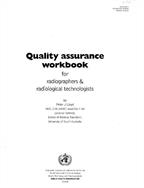Diagnostic imaging: electron magnetic resonance (EMR). Ukraine 2008
Strengthening medical imaging
Medical imaging developed rapidly to play a central role in medicine today by supporting diagnosis and treatment of a disease.
Recognizing that medical imaging for diagnostic and treatment refers to medical devices using ionizing and non-ionizing radiation and hybrid imaging modalities, such as: conventional radiology, fluoroscopy, angiography, computed tomography, ultrasound and magnetic resonance imaging, mammography, densitometry, dental radiology, diagnostic nuclear medicine, including positron emission tomography (PET), positron emission tomography-computed tomography (PET-CT) and single photon emission computed tomography (SPECT) and positron emission tomography magnetic resonance imaging (PET-MR), as well as interventional radiology (i.e., image-guided interventional procedures).
Many low and lower-middle income countries cannot afford imaging equipment, and often there is a shortage of healthcare workers trained to use such equipment.
The WHO collaborates with partners and manufacturers to develop technical solutions for improved diagnostic imaging services in remote locations. In addition, the WHO and partners provide training programs in the use and management of medical imaging with emphasis on patient safety.





